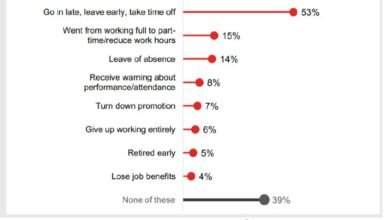
By | Eric Smith
Any form of bias at a workplace can negatively impact employees working in any organization. No matter intentional or unintentional, any type of bias needs to be addressed and dealt with before things get out of hand. While it is always easy to identify intended bias, it can challenge unintended bias.
However, one easy to identify such biases is by leveraging the capabilities of SAP SuccessFactors, which is one of the finest HRM suites available in the market. Certain modules of SAP SuccessFactors are equipped with great capabilities to help an organization identify and prevent any sort of unintended bias. Hence here are a couple of best practices and scenarios that can be leveraged to address such issues.
- Compensation: There have been instances where different employees receive different compensation for doing the same job. Things like these can be very demotivating for employees, ultimately hampering their productivity. However, one can use SAP SuccessFactors to get an overview of the compensation ratio of the entire team and highlight the inequities.
Furthermore, this platform can also help organizations calculate compensations by leveraging the absolute values rather than percentages. This will help organizations address any previous bias and address the same.
- Learning: Every employee in an organization must access equal learning opportunities. Hence organizations can provide employees with inclusive development and learning opportunities on any mobile learning management system (LMS) so that employees have the freedom to learn and enhance their skills conveniently.
Other than that, offering customers courseware on supportive supervision and performance assessments can also go a long way in combating unintended bias. SAP SuccessFactors can also help organizations offer diverse learning alternatives in different styles for better outcomes.
- Employee Management: Organizations can leverage SAP SuccessFactors to deliver enhanced HR solutions with localized features that align with the employees’ culture, languages, and preferences. Other than that, leveraging flexible demographic categorization to widen the range of terms and conditions that the employees can select can also be very helpful in addressing any sort of bias.
The other bias issue is that organizations often miss out on unconventional and contingent employees when devising any organizational strategy. However, SAP SuccessFactors can help include these employees in the organizational structures and charts features.
- Recruitment: Recruitment is an area where employees experience a lot of intentional and unintentional bias. However, that too can be corrected by leveraging the competencies of SAP SuccessFactors. For starters, organizations carry out scans to detect any form of gender bias and recommend language placements in job descriptions to attract a talented and gender-balanced pool of applications.
This can be done with the help of the job analyzer offered by SAP SuccessFactors. The recruitment module of SAP SuccessFactors can also help apply self-service features that are flexible enough to ensure the utilization of inclusive images and messages on different career sites.
- Goals and Performance: Managing employees’ goals and performance is one of the biggest challenges faced by managers. Therefore, the managers can leverage SAP SuccessFactors to devise actionable and equitable feedback systems with either the coaching advisor or the writing assistant.
Other than that, there is also the 360 reviews system that can be used to mitigate the influence on any individual manager. Managers can ensure unmatched performance management by promoting frequent feedback related to the job but based on the employees’ accomplishments. To determine any potentially biased performance decision-making, one can also set up bias alerts.
- Succession: Every employee strives to grow when working for an organization, and any form of bias in this area can have an adverse impact on the overall performance of the employees. Therefore, organizations must leverage SAP SuccessFactors to help ensure that both mentors and mentees are teamed based on the desired capabilities, skills, and experiences instead of demographic similarities.
Apart from that, organizations can apply career development competencies with profiles of the employees to allow them to indicate different achievements, interests, and even development goals. Self-selection of development opportunities can go a long way for employees.
- Collaboration: No organization can run its business operations successfully unless there is effective collaboration between different employees across the organization. SAP SuccessFactors is the ideal platform for driving enhanced collaboration throughout the organization, and one can ensure an enhanced connection between different employees throughout the organization.
Businesses can also generate valuable feedback from employees to determine the type of learning and development scenarios that are most engaging for the employees. Feedback can play a crucial role in enhancing collaboration, so businesses must encourage their employees to provide feedback either anonymously or directly through the polling functionality available in SAP SuccessFactors.
- Analytics and Reporting onthe Workforce: The workforce analytics module of SAP SuccessFactors is equipped with an investigative feature that can help organizations forecast and visualize different trends depicting the diversity of the workforce.
You can also make use of different benchmarks to carry out comparisons between the internal diversity data and the external metrics that could include anything from industry metrics to location metrics. Any sort of critical diversity metrics can be highlighted by deploying the analytics dashboard.
In Conclusion
Of all the factors that can negatively impact an organization’s performance, unintended bias towards employees is the worst. Therefore, get in touch with some of the finest SAP consulting services and create an ideal and rewarding workplace for your employees to drive augmented growth.
Author Bio:
Eric Smith is an SAP professional providing consulting services for SAP ERP system to hisclients. With a knack for technology, he loves to write on the latest SAP developments and share hisknowledge with the readers.








